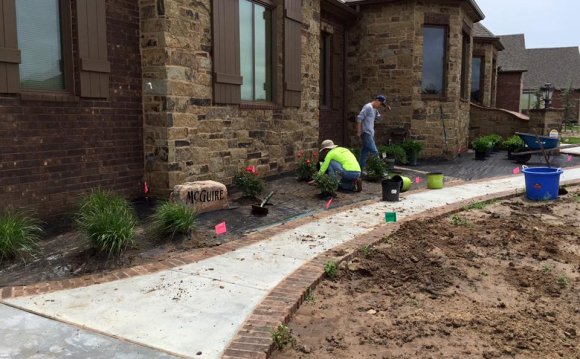
You may think of it as a blank canvas, but your new yard requires some deep thought before you dig in.
You’re excited about closing on your new home and can’t wait to dig into the blank canvas of a newly sodded lawn.
Well, here’s the bad news: That emerald green grass is also hiding terrible soil, unmarked wires and pipes, weed seeds, and years of hard work.
The good news is that it’s easy to dig new beds, weeds aren’t yet established, and your landscape is on equal footing with the Joneses.
Now, follow these five guidelines to make it even better and create a landscape you’ll love for years to come.
Start off beds right
The dirt beneath your feet is just that: dirt. Whether it’s newly added topsoil or nothing more than fill dirt, it will need your help to become fertile, rich and loamy soil.
In a perfect world, we’d all have heaps of compost lying around, but it takes time to let all of your grass clippings, wood chips, expired produce, and weeds rot into the perfect blend of life-sustaining goodness. For now, you have fewer options, with bagged composted cow manure being the most common.
Mushroom compost is also available, but be advised that it can be harmful to seedlings and salt-sensitive plants like azaleas, rhododendrons and camellias. If you happen to live near a zoo, ask if they offer their own composted manure; it’s good s— stuff.
Get the lay of the land
It may be tempting to plant that veggie garden of your dreams right after closing on the house, but be sure you have a reason to plant there. Does the spot receive lots of direct sunlight? Is it well-drained and puddle-free?
Ignore the inner voice that says “I can only draw stick figures” and draw a terrible diagram of your backyard to help you visualize areas with problems and promise. Draw one amoeba to remind you of an area that gets shade, and another one to represent a planned garden bed.
Even if your amoebas look like protozoa, no worries! As long as you understand the scribbles, they’ll help you plan with a purpose.
Remove unwanted builder plantings
Those builder plantings crammed against your house look innocuous enough now, but they could come back to bite you later.
Properly identify your existing plants, and make sure they’re good choices for you. A tree with messy leaves, flowers or fruits will leave you with lots of work, clogged gutters and stained driveways.
A tree with weak wood might later snap and be found crashing on your couch. A weedy or invasive plant will take over your lawn today — and tomorrow, the neighborhood.
Some plants are fine in the right setting, but will really cramp your style if they’re too large for their space or were planted too close to the house. When in doubt, rip it out.
Think ahead
Write down your biggest priority in the garden right now. Entertaining friends? Great!
Now imagine yourself 10 years into the future, and accompanied by a spouse and kids, or a flock of cats, or cooler, older friends. What will be your priority then? Now write down your priorities in 20 years, 30 years, and so on, until you get depressed and start to feel old.
Plant the garden of your dreams, but be sure that it will be the garden of your family’s (or cats’) dreams as well.
Start with mulch and groundcovers
Weeds are inevitable, but a struggling lawn or half-hearted attempt at a garden bed provide weeds with a veritable breeding ground.
Mulch is your first line of defense, and it also keeps soil from drying out. Begin mulching with a two-inch layer now, but plan on phasing it out in a few years if possible, since repeated mulching can rob the soil of nutrients and rob your wallet of money.
Instead, find a good, weed-suppressing groundcover like mondo grass, creeping phlox or Japanese forest grass, and plant as much as possible now so that you’ll be able to divide, replant and save heaps of money down the road. Grow them along the edge of your borders and borrow every time you plant a new bed.















